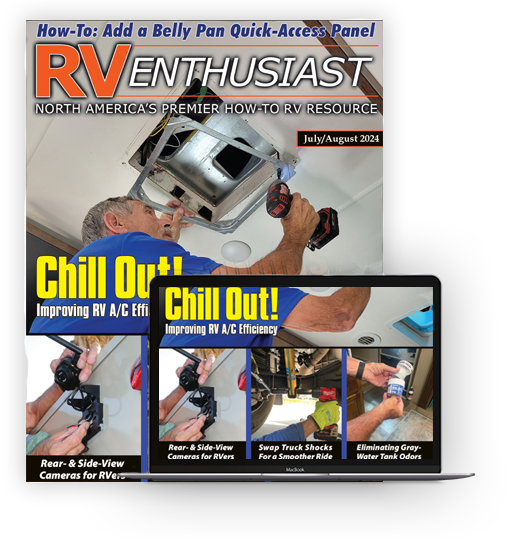Worry-Free Freshwater Sanitation
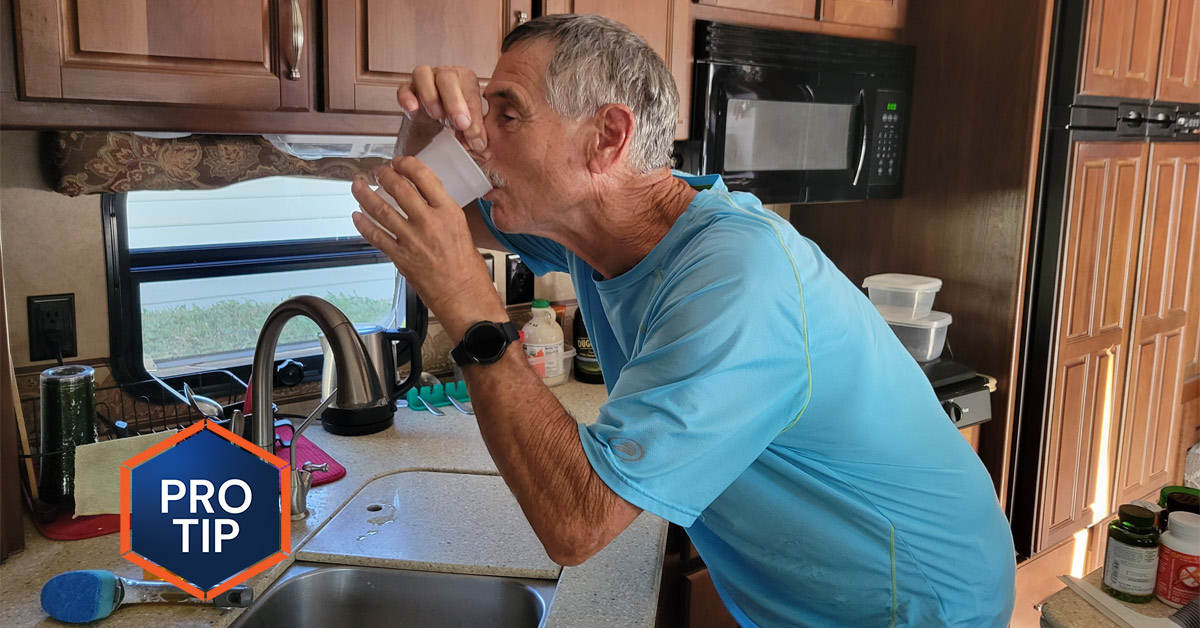
Rather than subscribing to the old method of using a mixture of bleach and water to neutralize bacteria and slime that contaminate the RV freshwater system, treating with Purogene, a solution that’s been around for more than 50 years and EPA-approved, is easier to use — and it’s even safe to drink.
Unless you’re a full-time RVer, the potable water and the integrated system of pipes, the tank and water heater in your RV could end up sitting full (or partially full) for months if the system isn’t drained beforehand — which will undoubtedly lead to contamination. And even if you take care of the water system, there’s still the risk of contamination from RV park water or other sources while on the road.
Fortunately, sanitizing your water system is not that difficult, requiring maybe an hour of your time. Classic procedures suggest the use of bleach and water to sanitize the tank and lines, but bleach is a poison and misuse can lead to even worse problems, including burning of your skin, damaging clothing and that awful lingering taste — even after thorough rinsing, which is mandatory. A better solution (pun intended) is to use Purogene, which has been around for more than 50 years and has the EPA’s blessing for use in drinking water. The liquid is 2% chlorine dioxide, which has no free chlorine and can successfully sanitize and deodorize RV water systems without the aforementioned negative issues related to the using bleach.
Purogene will control the buildup of odor and slime-forming bacteria in your freshwater tank— and it can be left in the system, because it’s safe to drink. A bottle of Purogene lasts a long time, requiring only 1 oz. to purify 30 gallons of water; it can be found on Amazon for $47.99 (32-ounce bottle).
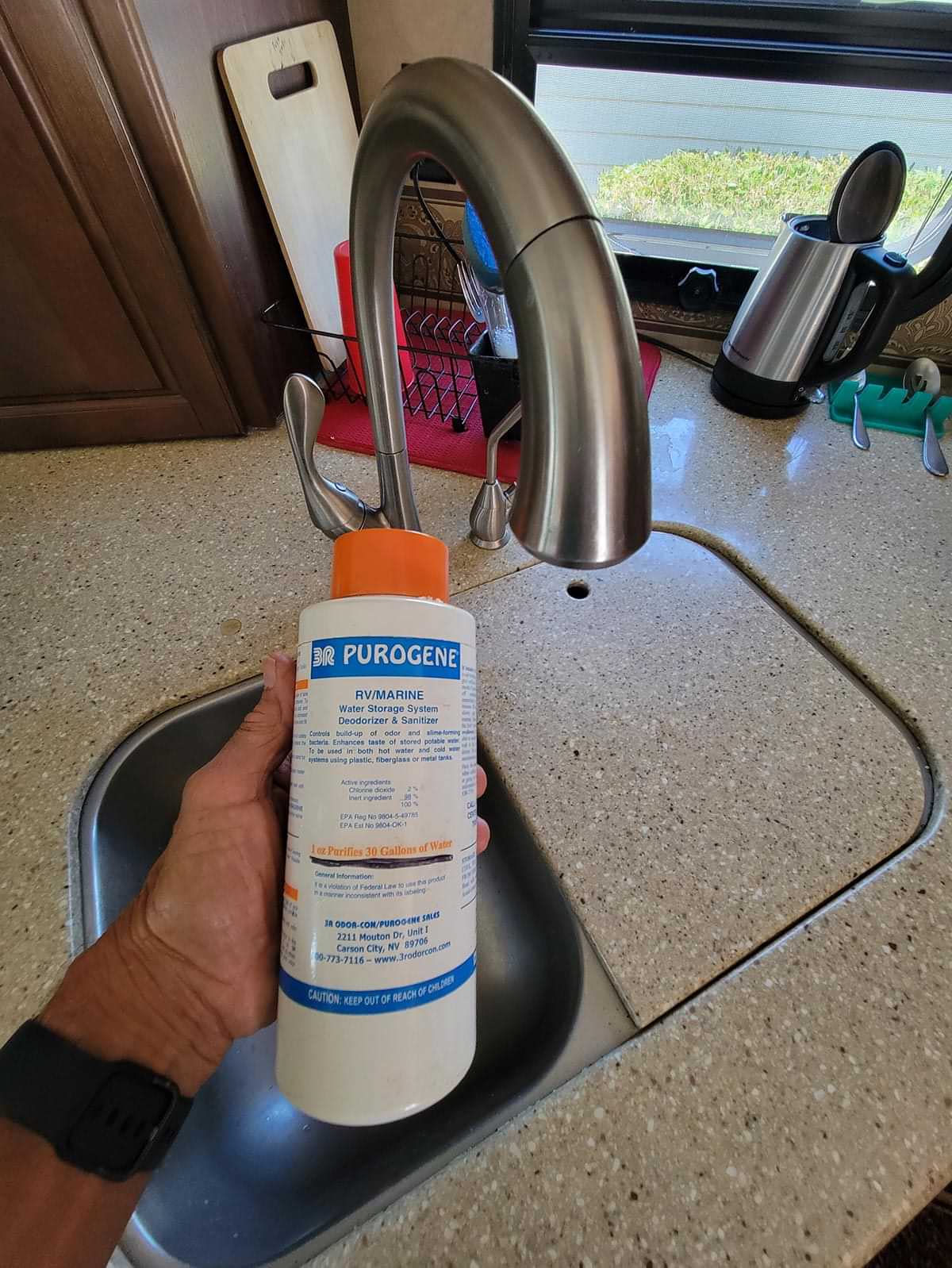
Purogene water treatment has been around for more than 50 years and has the EPA’s blessing for sanitizing drinking water. It can be used in lieu of bleach and water and is safer to use, posing no health hazard if consumed.
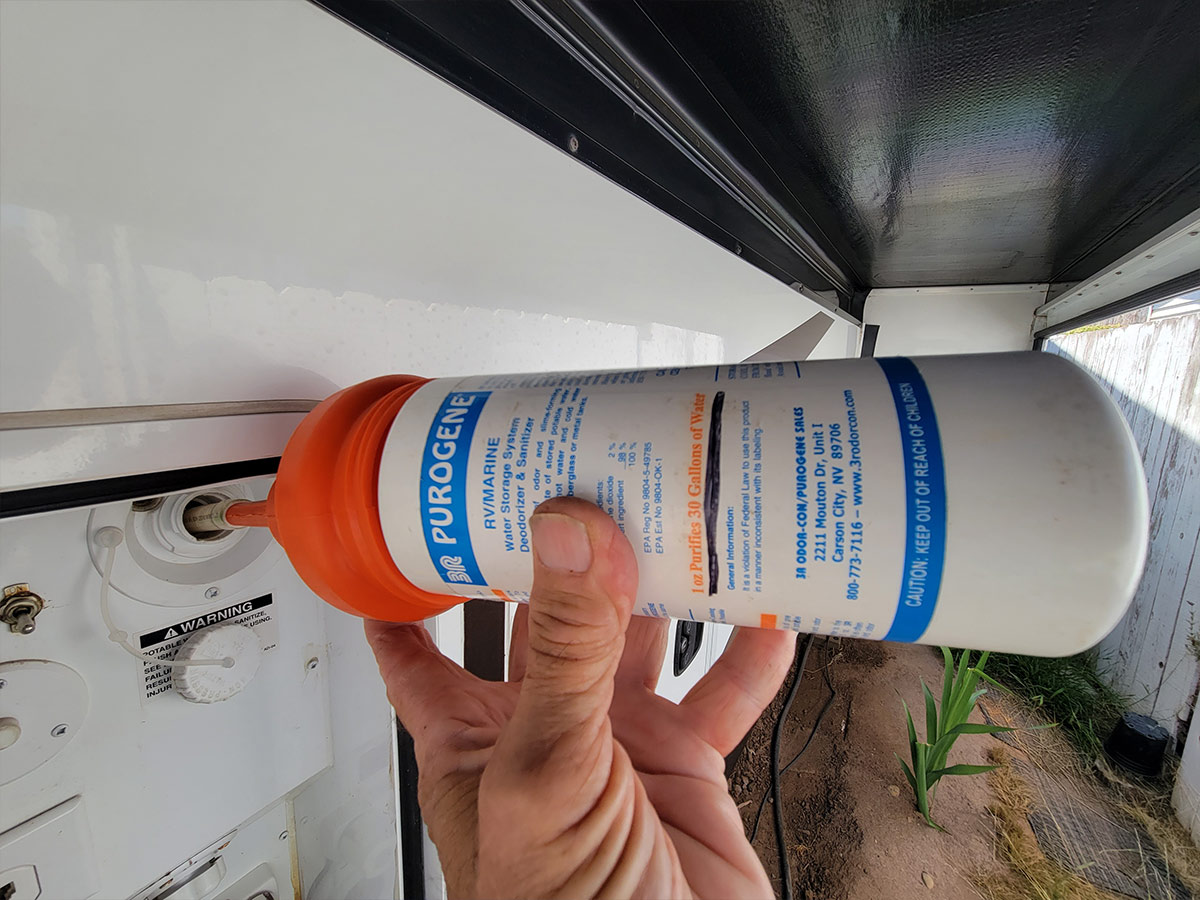
Make sure you fill the freshwater tank to capacity with the mixture of water and sanitizer. Turn the demand water pump On and open a hot water source (like the galley faucet) until the air bubbles are purged from the lines, filling the water heater. Run the water through all the faucets and showerhead(s) until it runs freely — and keep in mind that larger RVs will require more time for the water and sanitizer mix to reach the faucets and showerhead(s). If you have an outside shower, be sure you run the hot and cold there, as well.

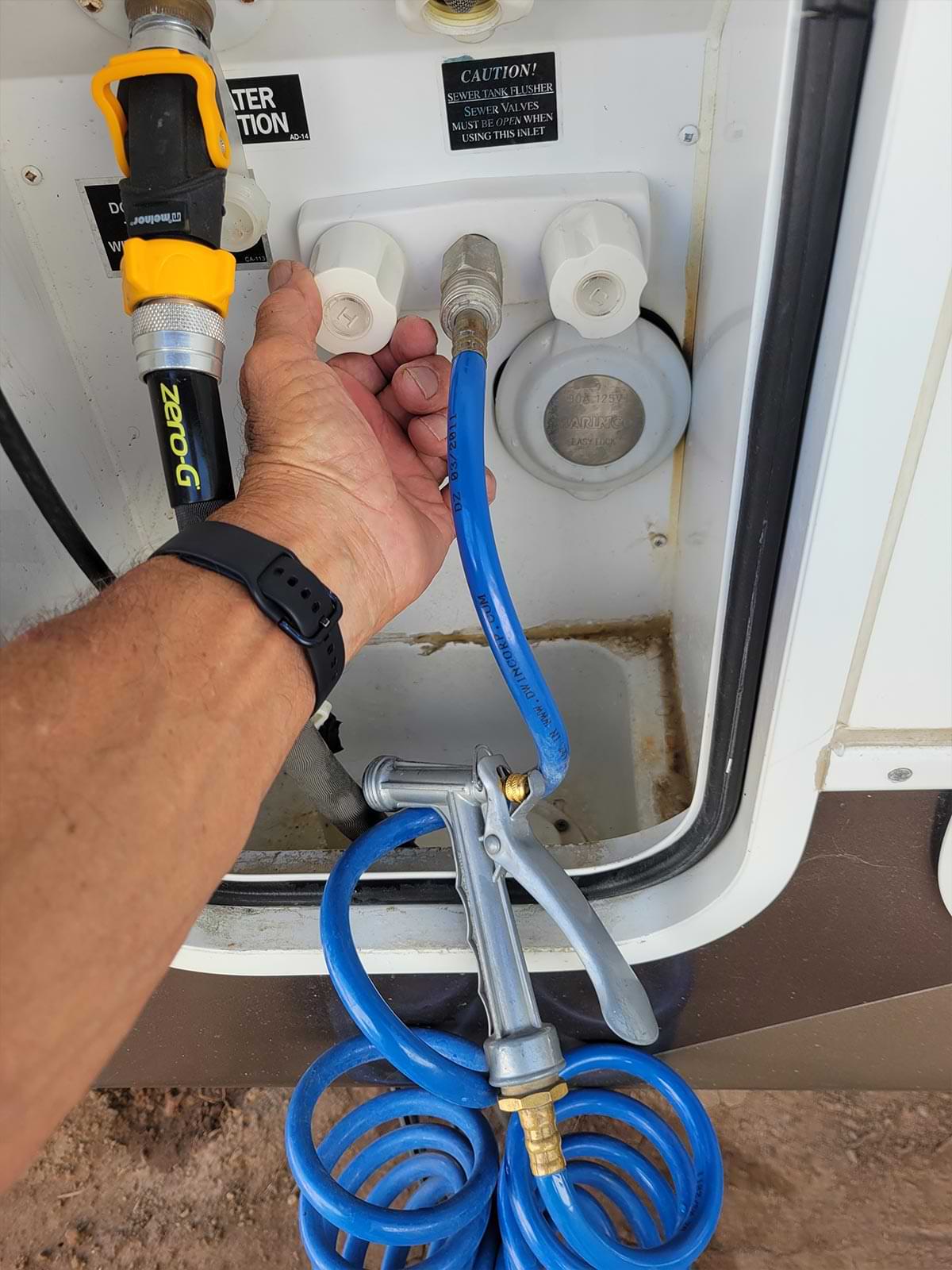
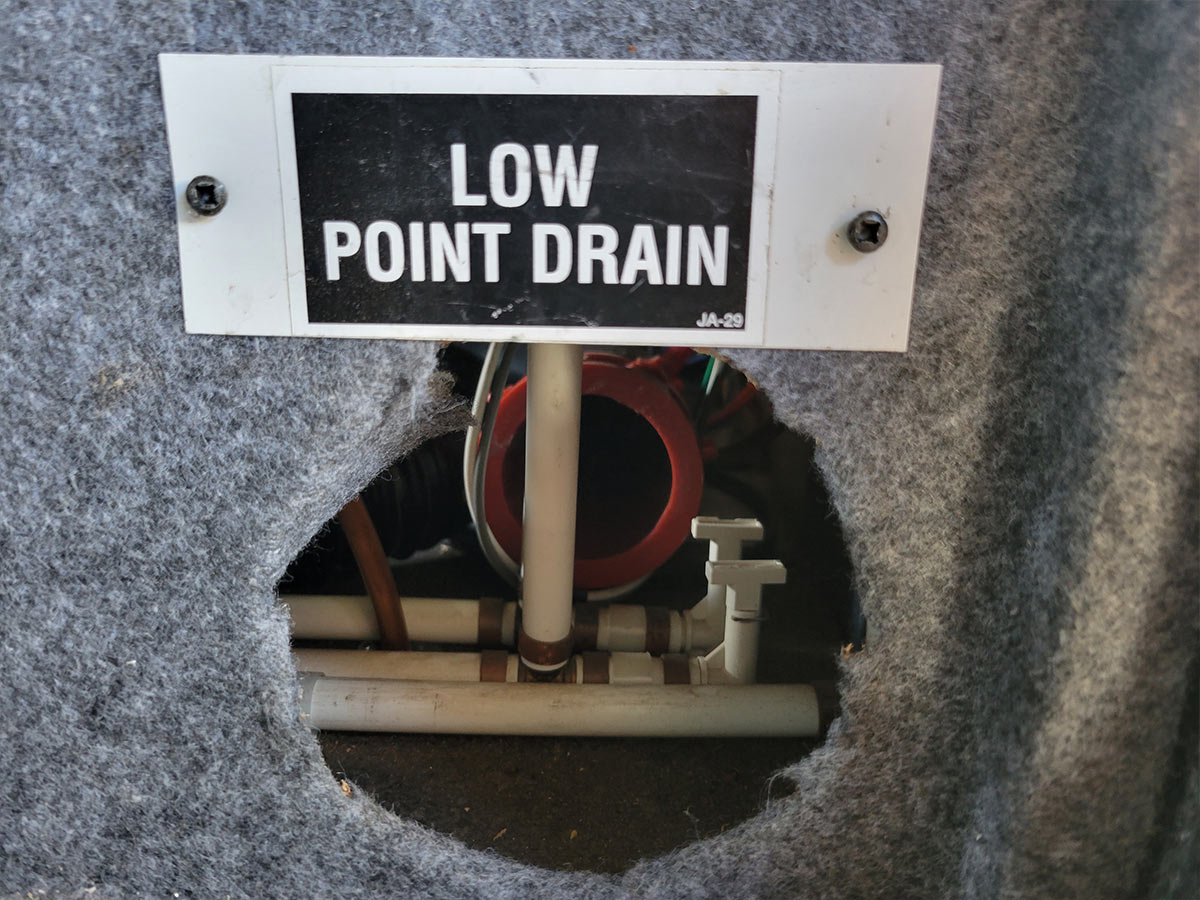
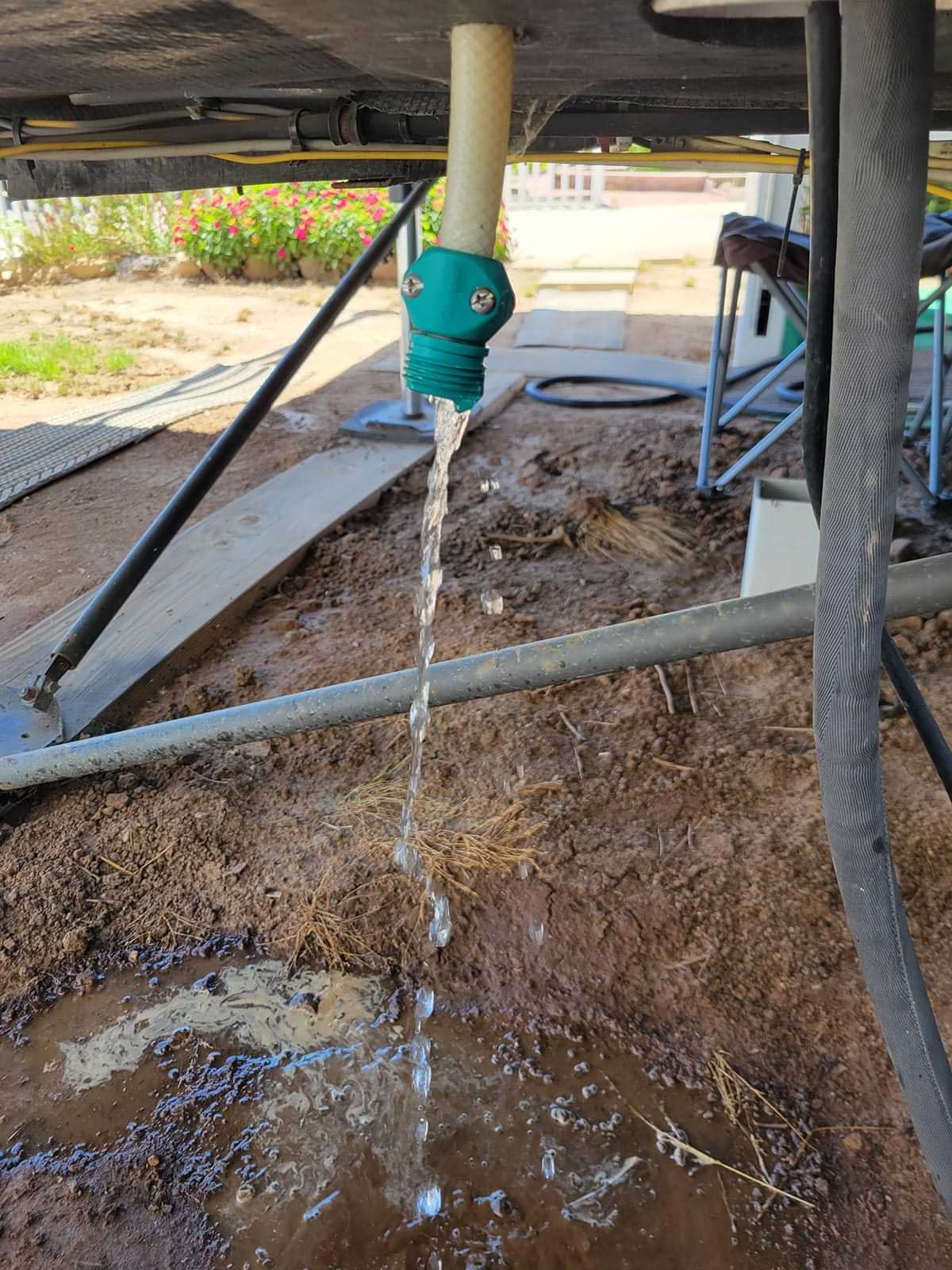
The low-point and water tank drains should be opened to make sure the sanitized water is flushed through the pipes in this vicinity. Flush the toilet (not shown) a few times to make sure the pipes in this area are also treated.
You do not necessarily need to run water into the toilet, but it does have several feet of piping routed to the main line and could back feed some contaminates later on. Open the low-point drains and run the sanitized water through that as well. After closing the low-point drains, let the water and sanitizer mix sit for a minimum of one hour (preferably two or three), to make sure that the system is fully sanitized.
At this point you could either flush your system with fresh water or leave it as-is — and gain the peace of mind knowing that bacteria and other nasty contaminates will have to find a home elsewhere.
Already a Subscriber? Click here for Access to the Full Issues.

